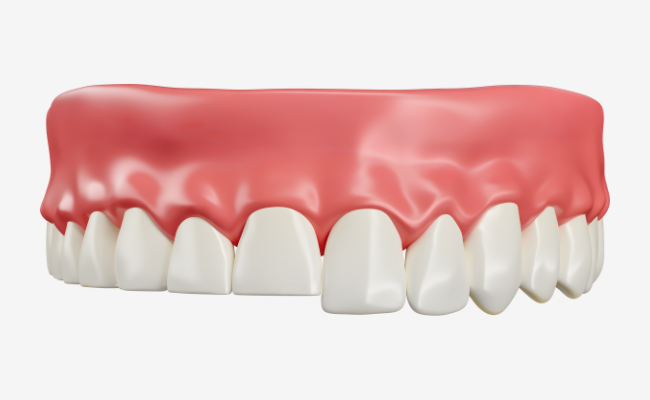How to Treat Bruxism?
- January 06, 2024
- No Comments

What is Bruxism?
Bruxism is a frequently overlooked condition characterized by the involuntary grinding or clenching of teeth, occurring during both wakefulness and sleep. This phenomenon involves the back-and-forth movement of teeth during grinding and the forceful pressing of upper and lower teeth together during clenching. The multifaceted causes of bruxism intertwine with factors such as stress, anxiety, abnormal bite, and certain lifestyle choices, affecting individuals of all ages.
Characterized by the subconscious clenching, grinding, or gnashing of teeth, bruxism can manifest during both wakefulness and sleep. While occasional teeth grinding is common, especially during times of heightened stress, persistent grinding can exert additional stress on teeth and jaws, potentially leading to dental damage, frequent headaches, jaw pain, and other related issues. Although bruxism can impact individuals of any age, its prevalence is notably higher during childhood, adolescence, and young adulthood. Determining the exact frequency of teeth grinding proves challenging due to its primary occurrence during sleep, making it difficult to gauge among individuals.
Why Does Bruxism Occur?
Understanding the root causes of bruxism is essential for effective treatment. Stress and anxiety are frequently identified as primary contributors to teeth grinding. Individuals experiencing high levels of stress may subconsciously clench or grind their teeth as a way of coping with tension. Additionally, an abnormal bite, where the teeth do not align correctly, can contribute to bruxism. Lifestyle choices, such as excessive consumption of caffeine or the use of certain medications, can exacerbate the condition. Furthermore, there is a recognized association between bruxism and sleep disorders, such as sleep apnea.
How to Identify Bruxism?
Detecting bruxism can be challenging, particularly when it occurs during sleep. However, certain signs and symptoms can serve as indicators of the condition. Partners or family members may notice grinding sounds during the night, providing an auditory clue. Individuals who wake up with jaw pain or soreness, accompanied by persistent headaches, may be experiencing the effects of nighttime teeth grinding. Dentists can also play a crucial role in identifying bruxism through routine check-ups, where they may observe signs of tooth wear and tear. Facial pain, especially around the jaw and temples, can further hint at the presence of bruxism.
Treatment Solutions for Bruxism
- Addressing bruxism involves a combination of strategies tailored to the individual's specific circumstances. Dental appliances, such as night guards or splints, are commonly prescribed to create a protective barrier between the upper and lower teeth, mitigating the impact of grinding. Stress management techniques, including relaxation exercises, meditation, and counseling, can be instrumental in reducing the psychological factors contributing to bruxism.
- Behavioral therapy is another approach that focuses on identifying and modifying the habits associated with bruxism. Individuals learn techniques to consciously control jaw muscle activity and break the cycle of grinding. In some cases, medications like muscle relaxants or anti-anxiety drugs may be prescribed to alleviate the symptoms of bruxism, though this approach is usually reserved for severe cases due to potential side effects.
- Dental corrections may be recommended if bruxism is linked to issues such as an abnormal bite. Orthodontic treatments or other dental procedures can address the underlying problem, reducing the likelihood of continued teeth grinding.
Benefits of Treating Bruxism
- Prevention of Dental Damage: One of the primary benefits of treating bruxism is the prevention of dental damage. Excessive grinding can lead to fractures, enamel erosion, and other oral health issues. Dental appliances, such as night guards, act as a protective barrier, reducing the impact on teeth and preventing further damage.
- Pain Relief: Individuals suffering from bruxism often experience jaw pain, headaches, and facial discomfort. Treatment methods, including the use of dental appliances and behavioral therapy, can provide relief from these symptoms, enhancing overall comfort and well-being.
- Improved Sleep Quality: Bruxism can disrupt sleep patterns, leading to fragmented and restless sleep. By effectively managing the condition, individuals can experience improved sleep quality. Dental appliances, in particular, contribute to a more relaxed jaw during sleep, promoting better rest.
- Prevention of Complications: Long-term untreated bruxism may lead to more severe complications, such as temporomandibular joint (TMJ) disorders. Timely intervention and appropriate treatment can prevent the development of these complications, ensuring better long-term oral health.
- Enhanced Quality of Life: Beyond the physical symptoms, treating bruxism can have a positive impact on mental well-being. Stress management techniques and behavioral therapy not only address the symptoms but also contribute to a reduction in overall stress and anxiety levels. This holistic approach enhances the individual's quality of life.
Comments (0)